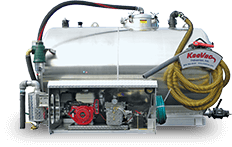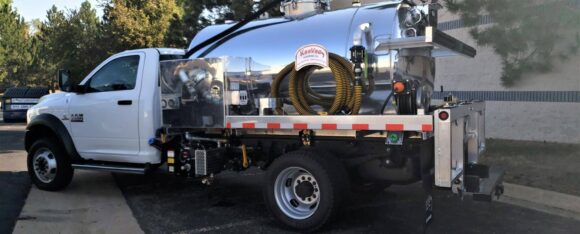Training and Safety Considerations for Slide-In Unit Operators

In industries where the use of slide-in units is prevalent, ensuring the safety and competence of operators is paramount. These versatile units, commonly employed in construction, logistics, and various service sectors, demand a comprehensive training program for operators and those working in their proximity. This blog explores the essential elements of training and safety measures required for slide-in unit operators, emphasizing the crucial role proper training plays in accident prevention and the efficient utilization of these units.
The Significance of Training Programs
Slide-in units, whether hydraulic lift platforms, slide-in truck bodies, or similar equipment, require a nuanced skill set for effective operation. Training programs tailored to these units should encompass theoretical knowledge and practical skills. Operators need to understand the mechanics of the slide-in unit, including its components, controls, and safety features. Comprehensive training ensures that operators are equipped to handle various scenarios, from routine operations to emergency situations.
Additionally, training programs should address proper maintenance procedures. Operators must be familiar with routine checks, troubleshooting, and minor repairs to mitigate the risk of equipment failure. A well-rounded training curriculum not only instills confidence in operators but also contributes to the longevity and reliability of the slide-in units.
Hands-On Training for Practical Proficiency
While theoretical knowledge forms the foundation, hands-on training is indispensable for developing practical proficiency. Simulated exercises, under the supervision of experienced trainers, allow operators to familiarize themselves with the nuances of operating slide-in units. This includes mastering the controls, understanding load capacities, and honing maneuvering skills.
Hands-on training should simulate real-world scenarios, incorporating challenges operators might face in their day-to-day tasks. This practical experience is invaluable in developing quick thinking and effective decision-making skills. It also instills muscle memory, enabling operators to respond swiftly and accurately to unexpected situations.
Safety Measures: A Priority in Training
Safety must be a core focus of any training program for slide-in unit operators. Emphasizing the importance of adhering to safety protocols is critical to preventing accidents and injuries. Training should cover not only the safe operation of the unit but also address potential hazards and risk mitigation strategies.
Operators should be trained to conduct pre-operational safety checks, ensuring that the slide-in unit is in optimal condition before use. They should be aware of load limits, proper securing techniques, and the potential hazards associated with different environments. Moreover, training should instill a culture of continuous awareness, prompting operators to stay vigilant and proactive in identifying and addressing potential safety concerns.
Emergency Response Training
Accidents can happen despite the best preventive measures. Therefore, training programs must include emergency response protocols. Operators should be well-versed in how to respond to equipment malfunctions, sudden changes in weather conditions, or other unforeseen circumstances.
Emergency response training should encompass evacuation procedures, first aid skills, and communication protocols to ensure a swift and coordinated response in the event of an incident. Equipping operators with the knowledge and skills to handle emergencies not only safeguards their well-being but also minimizes potential damage to equipment and surrounding areas.
The Role of Continuous Learning and Refresher Courses
Technology evolves, safety standards change, and equipment undergoes updates. Continuous learning is vital to keep slide-in unit operators abreast of the latest developments in their field. Regular refresher courses help reinforce foundational knowledge, introduce new safety protocols, and address any emerging challenges or trends in the industry.
Moreover, refresher courses provide an opportunity to evaluate and enhance the skills of experienced operators. This ongoing commitment to learning ensures that operators remain competent and confident in their roles, contributing to a safer and more efficient work environment.
A Holistic Approach to Slide-In Unit Operations
Training and safety considerations for slide-in unit operators are integral to the overall success and well-being of any operation. A comprehensive training program, encompassing theoretical knowledge, hands-on experience, safety measures, and emergency response protocols, is essential for cultivating skilled and responsible operators. Continuous learning and refresher courses further contribute to the longevity of safe and efficient slide-in unit operations. By prioritizing training, industries can not only prevent accidents and injuries but also optimize the performance and lifespan of their equipment. Investing in the competence and safety of slide-in unit operators is an investment in the success and sustainability of the entire operation.
Need a Vacuum Truck Up Fitter in Denver, CO?
Keevac Industries is proud to carry a large selection of portable restrooms, septic, grease, slide-ins, and tank inventory. Our knowledgeable and friendly staff are eager to help you find exactly what you are looking for. As your trusted vacuum truck manufacturer, we can build service trucks to your specifications. We offer nationwide shipping as well as international if needed. Give us a call today to get your vacuum truck project started!

 If you are in the market for a slide-in pumper unit, it is important to consider several features before making a decision. A slide-in pumper unit is a versatile piece of equipment that can be easily mounted on a truck or trailer, making it ideal for firefighters, municipal departments, and other emergency response teams. Here are some key features to consider when choosing a slide-in pumper unit:
If you are in the market for a slide-in pumper unit, it is important to consider several features before making a decision. A slide-in pumper unit is a versatile piece of equipment that can be easily mounted on a truck or trailer, making it ideal for firefighters, municipal departments, and other emergency response teams. Here are some key features to consider when choosing a slide-in pumper unit: